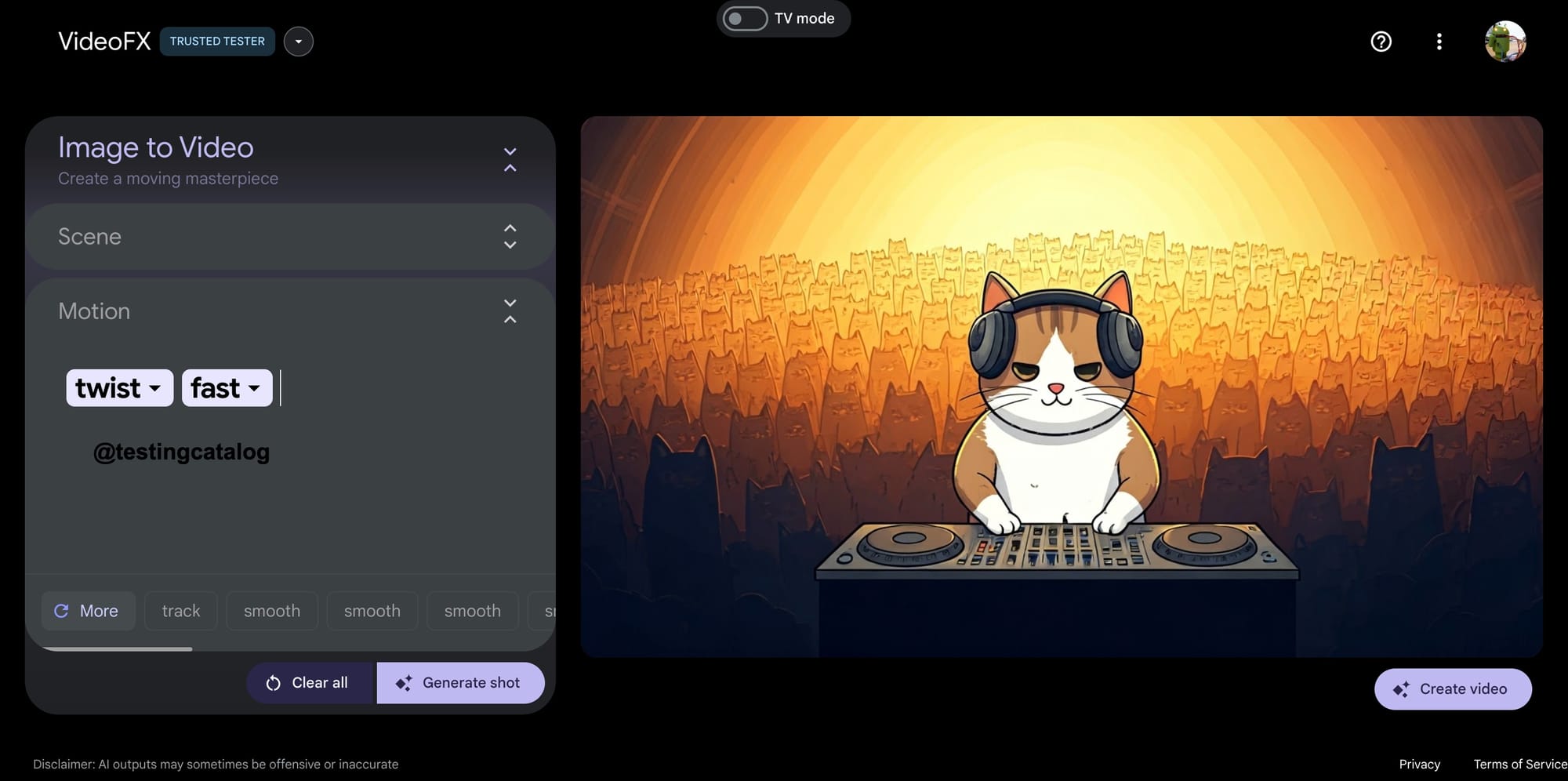Google's VideoFX and Veo are making waves in the AI-generated video landscape, with recent discoveries hinting at a separate image-to-video mode that includes scene and motion controls. This development, uncovered by TestingCatalog, suggests that Google is pushing the boundaries of its generative video model, Veo, to offer more versatile and controlled video creation capabilities.
The new image-to-video mode allows users to specify a prompt to generate images using Imagen3, Google DeepMind's highest-quality image-generation model. This approach is reminiscent of the earlier "Storyboard" implementation, which was removed but now seems to be making a comeback with enhanced features. The scene control feature can generate movement based on the original object or scene, offering a more dynamic and realistic video creation experience.
Quick controls with various dropdown options are also available, indicating a more user-friendly interface. Although Veo generation is still not fully functional, the changes suggest that it is undergoing Google's trusted testing phase, signaling a potential release in the near future.

Google's commitment to developing responsible AI tools in partnership with creators and artists is evident in the updates to VideoFX, ImageFX, and MusicFX. These tools are designed to support creatives through the storytelling journey, offering more control and flexibility in the generative creation process. The introduction of My Library, which allows users to save, review, and remix content, further enhances the creative workflow.
BREAKING 🚨: VideoFX and Veo may arrive with a separate image-to-video mode that has scene and motion controls 👀 pic.twitter.com/agcRzWJqzZ
— TestingCatalog News 🗞 (@testingcatalog) October 10, 2024
The competition in the video generation field is heating up, with OpenAI's Sora and LumaLabs' Dream Machine also vying for attention. However, Google's comprehensive approach to video creation, combining video generation with a timeline feature and AI audio capabilities, may give it an edge in the market.
As VideoFX and Veo continue to evolve, it will be interesting to see how these tools shape the future of video creation and storytelling. With Google's focus on responsible AI development and collaboration with creators, the possibilities for innovative and high-quality video content are vast.
Key features of the new image-to-video mode include:
- Image-to-video mode: Allows users to specify a prompt to generate images using Imagen3.
- Scene control: Generates movement based on the original object or scene.
- Quick controls: Offers various dropdown options for a more user-friendly interface.
- Veo generation: Undergoing Google's trusted testing phase, indicating a potential release soon.
These developments underscore Google's commitment to advancing AI-generated video capabilities, offering creators more tools to bring their ideas to life.






